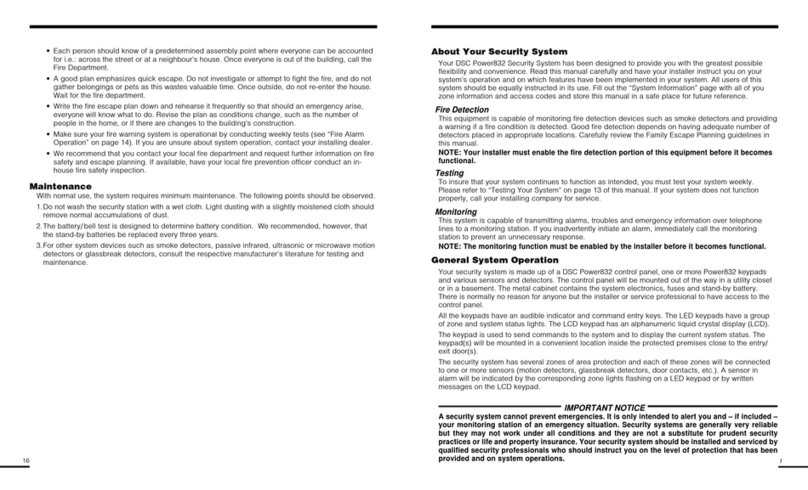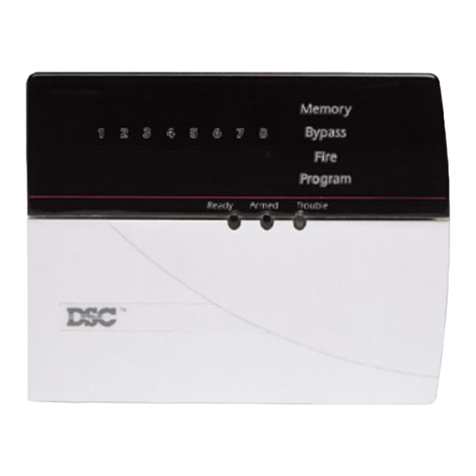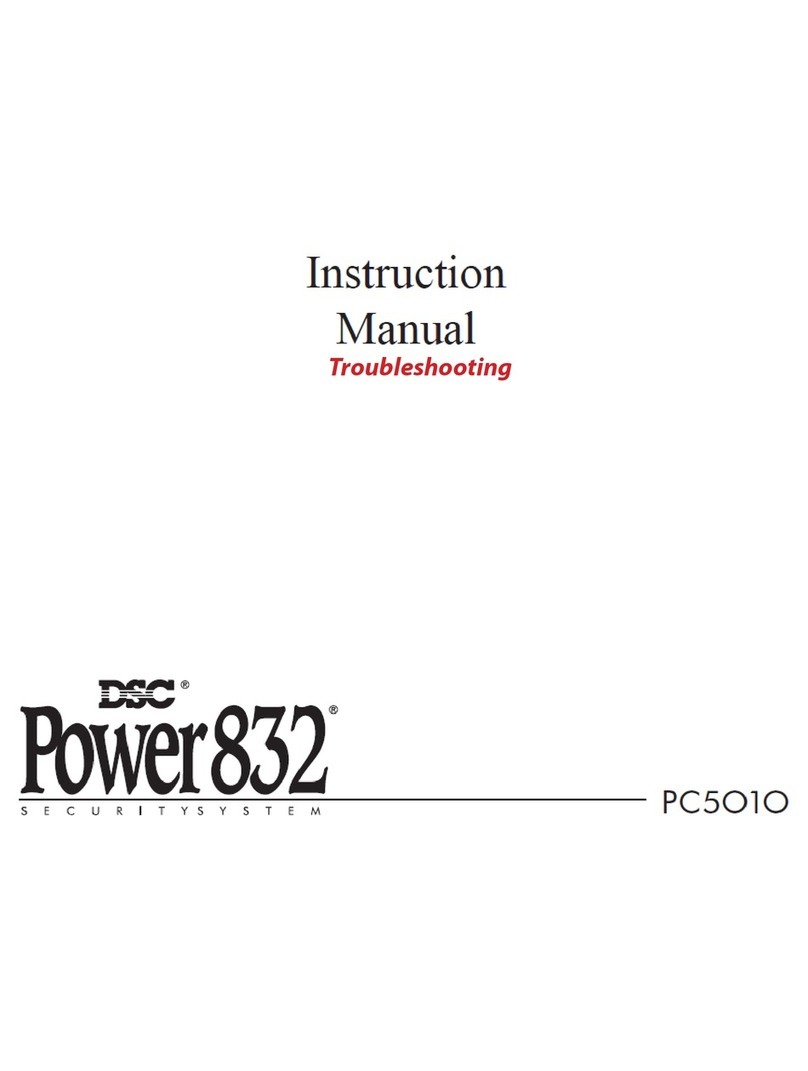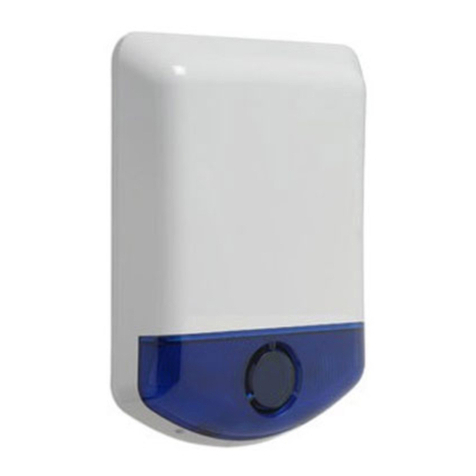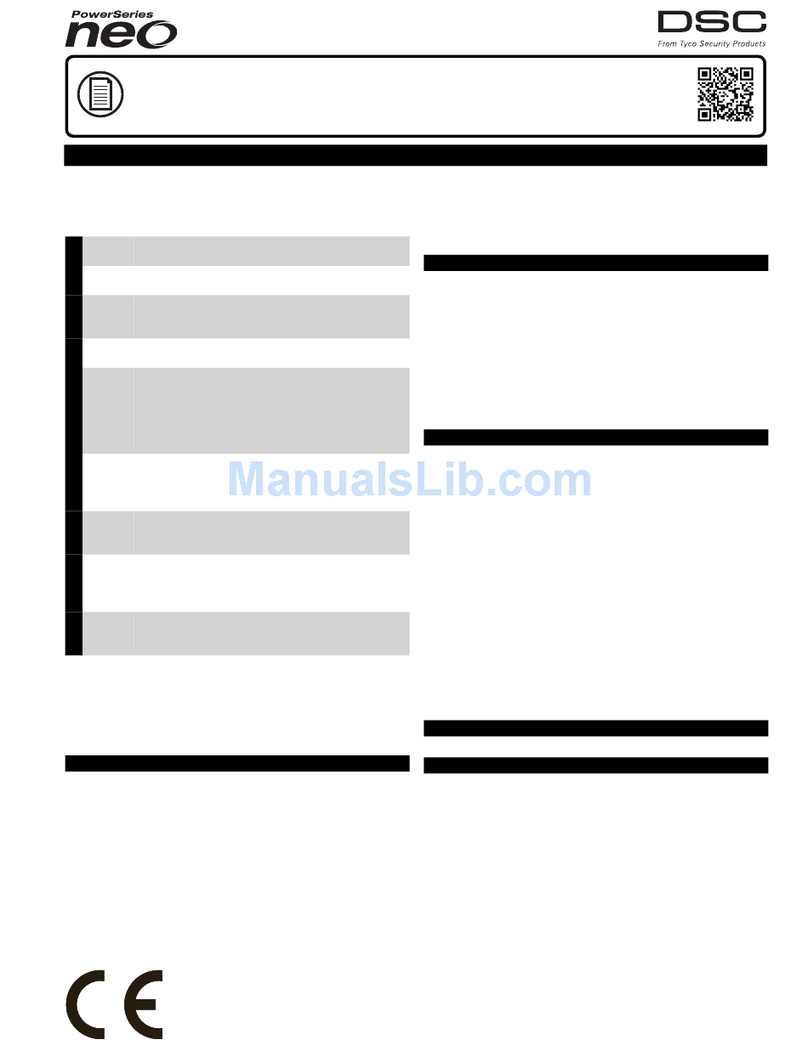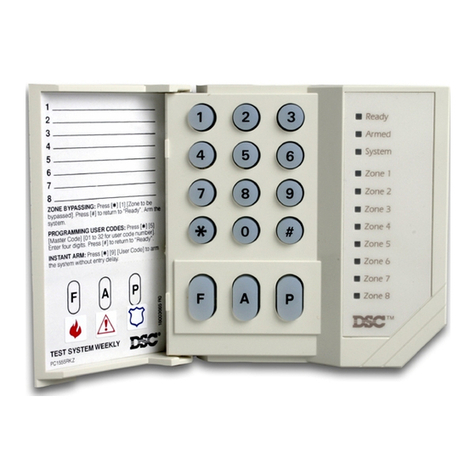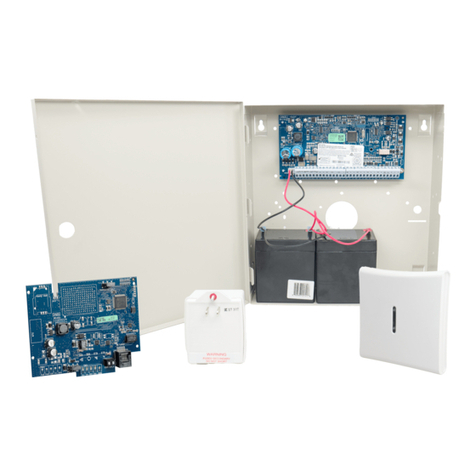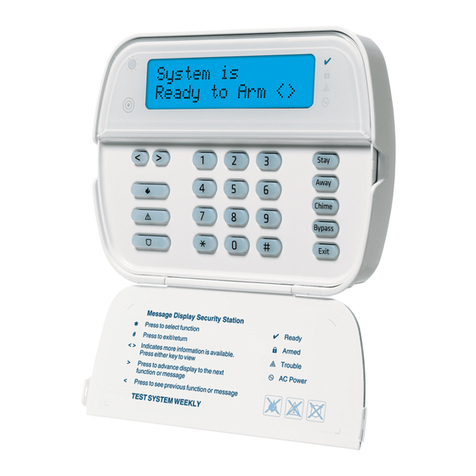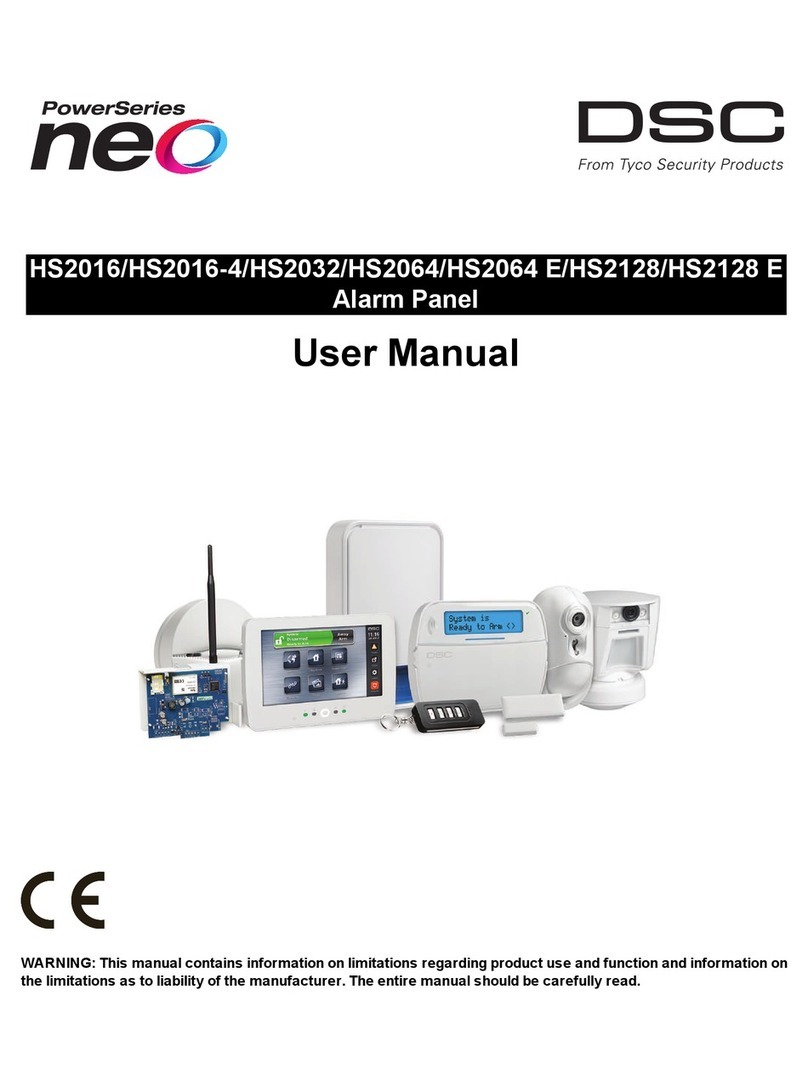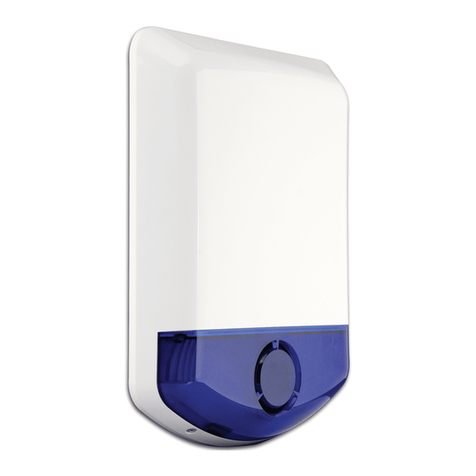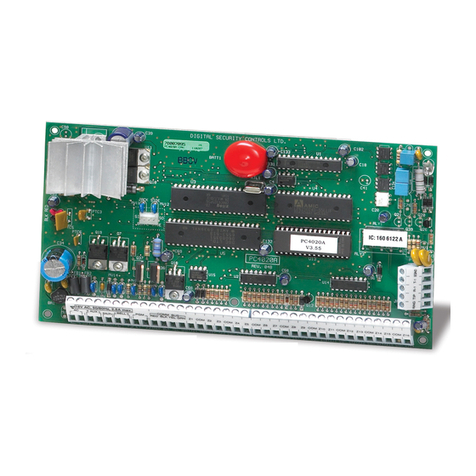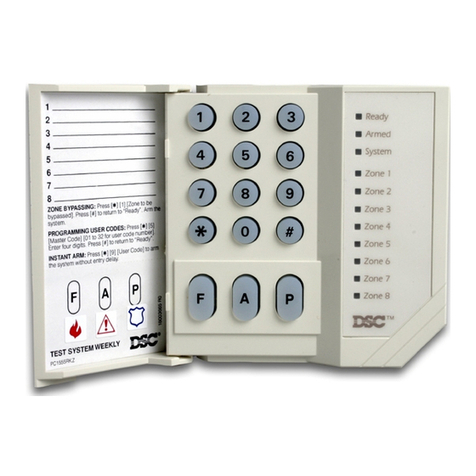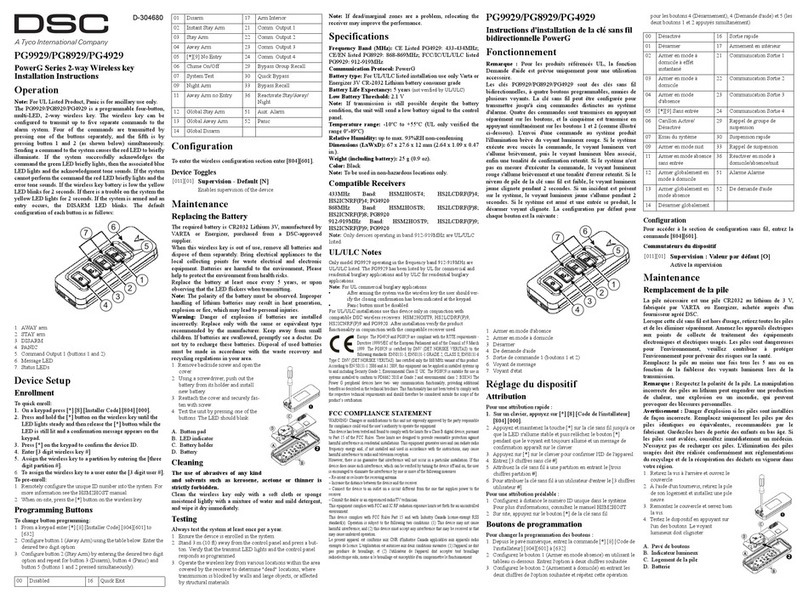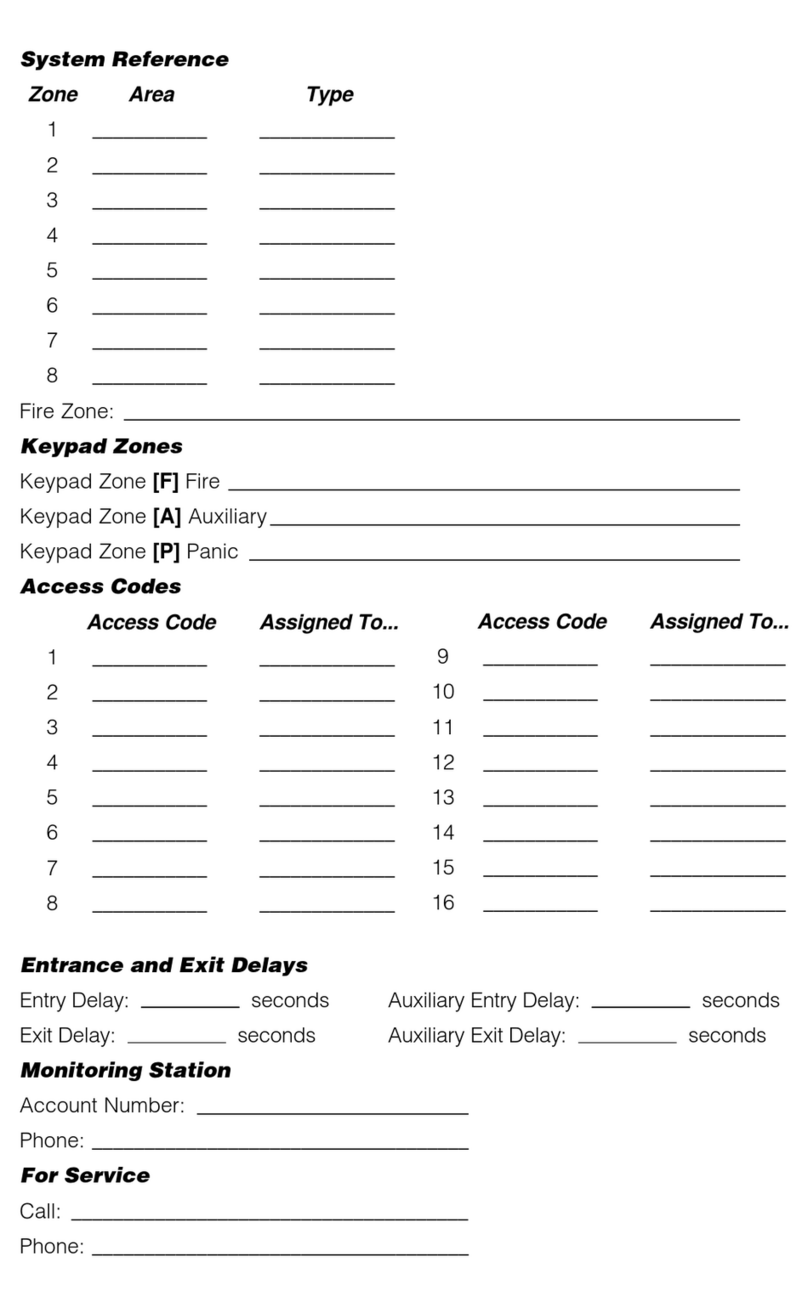
3
Safety Information
IMPORTANT
The equipment is fixed, wall-mounted and shall be installed in the position specified in these instructions. The equipment enclosure
must be fully assembled and closed, with all the necessary screws/tabs and secured to a wall before operation. Internal wiring must be
routed in a manner that prevents:
- Excessive strain on wire and on terminal connections
- Loosening of terminal; connections
- Damage of conductor insulation
WARNING: Never install this equipment during a lightning storm!
Instruct the end-user to:
- Not attempt to service this product. Opening or removing covers may expose the user to dangerous voltages or other risks. Any ser-
vicing shall be referred to trained service persons only.
- Use authorized accessories only with this equipment.
Do not dispose of the battery in fire or water. Disposing of the battery in a fire will cause rupture and explosion.
Do not dispose of the waste battery as unsorted municipal waste. Consult your local regulations and /or laws regarding recycling with
regard to this lead-acid battery. Doing so will help protect the environment. Some of the materials that are found within the battery
could become toxic if not disposed of properly and may affect the environment.
This equipment, LE4000, is fixed and shall be installed by Service Persons only (Service Person is defined as a person having the
appropriate technical training and experience necessary to be aware of hazards to which that person may be exposed in performing a
task, and of measures available to minimize the risks to that person or other persons). It shall be installed and used within an envir-
onment that provides the pollution degree max 2, over voltages category II, in non-hazardous, indoor locations only. This manual
shall be used with the Installation Manual of the relevant alarm control panel. All instructions specified within that manual must be
observed.
Approvals Information
For UL Residential Fire and Burglary installations, the LE4000 is listed as a sole means of communication or as a back up when used
in conjunction with a POTS line (dialer). For UL Residential Fire installations, the LE4000 must be connected to a UL-listed power
supply with a minimum of 24 hours standby power or powered using the ADP 1310(W)-NAU and a 2200mAh battery.
For UL Commercial Burglary installations, the LE4000 is listed as a sole means of communication (supervision window of 200s
required at monitoring station) or as a back-up when used in conjunction with a POTS line (dialer).
The LE4000 shall be powered from any compatible listed control unit or compatible listed power supply that complies with the ratings
specified on page 1. The power supply shall be listed for burglary applications and provide a minimum of 4 hours standby power cap-
abilities. An example of a suitable listed compatible control unit is the DSC Model PC1864 with an AUX output rated 11.1 -
12.6Vdc. An example of a suitable Listed power supply is DSC Model PC5204 with an AUX output rated 11.6 - 12.6Vdc.
For ULC Commercial Burglary installations the LE4000 is listed as a passive communication system with communication line secur-
ity level P1 when used as single communication path or P2 when used as a back up in conjunction with a POTS line (dialer). The
LE4000 is also listed for Active line security levels A1-A4 (90 seconds heartbeat enabled and supervision window of 180s required
at monitoring station receiver and encryption must be enabled). For ULC Commercial Burg installations, the LE4000 must be con-
nected to a ULC-listed power supply with a minimum of 24 hours standby power or powered using the ADP 1310(W)-NAU and a
2200mAh battery. The LE4000 can be used in commercial burglary applications up to Security Level IV.
For ULC Residential Fire and Burglary installations the LE4000 is listed as a sole means of communication or as a back up when
used in conjunction with a POTS line (dialer). For ULC Residential Fire installations, the LE4000 must be connected to a ULC-listed
power supply with a minimum of 24 hours standby power or powered using the ADP 1310(W)-NAU and a 2200mAh battery.
Notes for using Private, Corporate and High Speed Data Networks: Network access and domain access policies shall be set to
restrict unauthorized network access, and “spoofing”or “denial of service”attacks. Select internet service providers that have redundant
servers/systems, back-up power, routers with firewalls enabled and methods to identify and protect against “denial of service” attacks
(i.e., “spoofing”).













